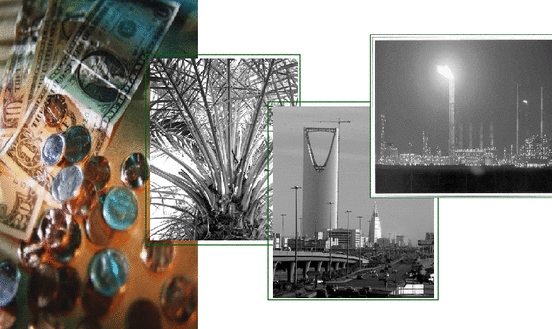The outlook for the Saudi economy, which grew at 7.1 percent last year, remains buoyant, the IMF said in its annual economic review.
The oil sector continues to dominate the economy, but strengthened budgetary institutions have reduced the linkage between the oil price and the level of fiscal spending, and progress has been made on diversifying the economy. Further strengthening of budgetary institutions, financial deepening, and a focus on increasing productivity are key going forward, the IMF added.
Supported by increased government spending and supportive monetary policy, overall real GDP is estimated to have grown by 7.1 percent in 2011, with 8 percent growth recorded in the non-oil sector–the highest since 1981. The private sector grew at 8.5 percent, with the construction and manufacturing sectors providing the largest lifts.
Saudi international reserves, which constitute the principal savings component of oil wealth, exceeded half a trillion dollars
Despite its increased spending, the government has room to save, setting aside a portion of the extra oil revenues for future generations. "International reserves, which constitute the principal savings component of oil wealth, exceeded half a trillion dollars (94 percent of 2011 GDP). The banking sector also remains highly capitalized and liquid, with improved profitability," the IMF said.
$110 billion to construct half a million new affordable housing units
The Saudi government allocated almost two-thirds of a combined $110 billion fiscal package to a multi-year project to construct half a million new affordable housing units. The government also allocated an additional $11 billion to the Real Estate Development Fund to increase the availability of housing loans.
The government also allocated about $5 billion to the Saudi Credit and Savings Bank, with the intention of expanding financing for small businesses. The government intends to transfer a similar amount to the Saudi Industrial Development Fund to support bank credit to small and medium-sized enterprises (Kafala) and other lending.
IMF notes that spillovers from policy decisions in Saudi Arabia have important positive spillovers at both the global and regional level
In assessing the economy of the world's largest oil producer, the IMF also noted that spillovers from policy decisions in Saudi Arabia have had important positive spillovers at both the global and regional level. At the global level, spillovers occur via the oil market –Saudi Arabia is the only producer that has traditionally maintained significant spare production capacity, which it has employed to help smooth oil market fluctuations.
Higher growth and fiscal spending in Saudi Arabia are having a positive impact on several countries in the region through increased demand for imports
At the regional level, higher growth and fiscal spending in Saudi Arabia are having a positive impact on several countries in the region through increased demand for imports and higher remittances from foreign labor employed in the Kingdom. This regional support–particularly important given the difficult economic situation in many countries–has been supplemented by substantial new pledges of financial assistance.
On current trends, real GDP is projected to grow by 6 percent in 2012. The private sector is again expected to lead the way, reflecting the increased role of the private sector in the economy, a clear break from the past. "The very strong macroeconomic outlook is a result of prudent economic management," said Robinson, adding that "apart from the oil market, the Saudi economy is generally well insulated from the euro area crisis: non-oil exports to the euro area are relatively small, and financial cross-border spillover effects appear minor."
The Saudi Gazette
20 September






































































